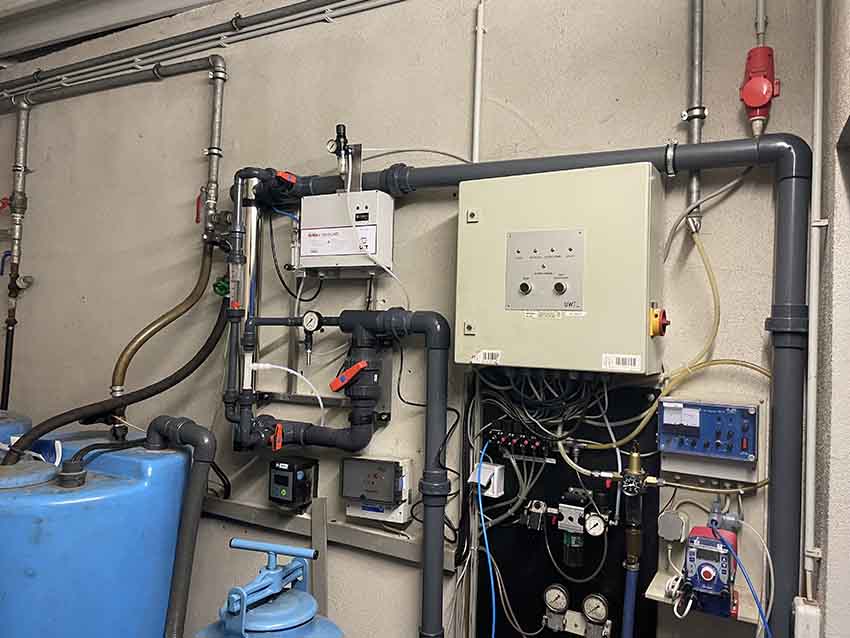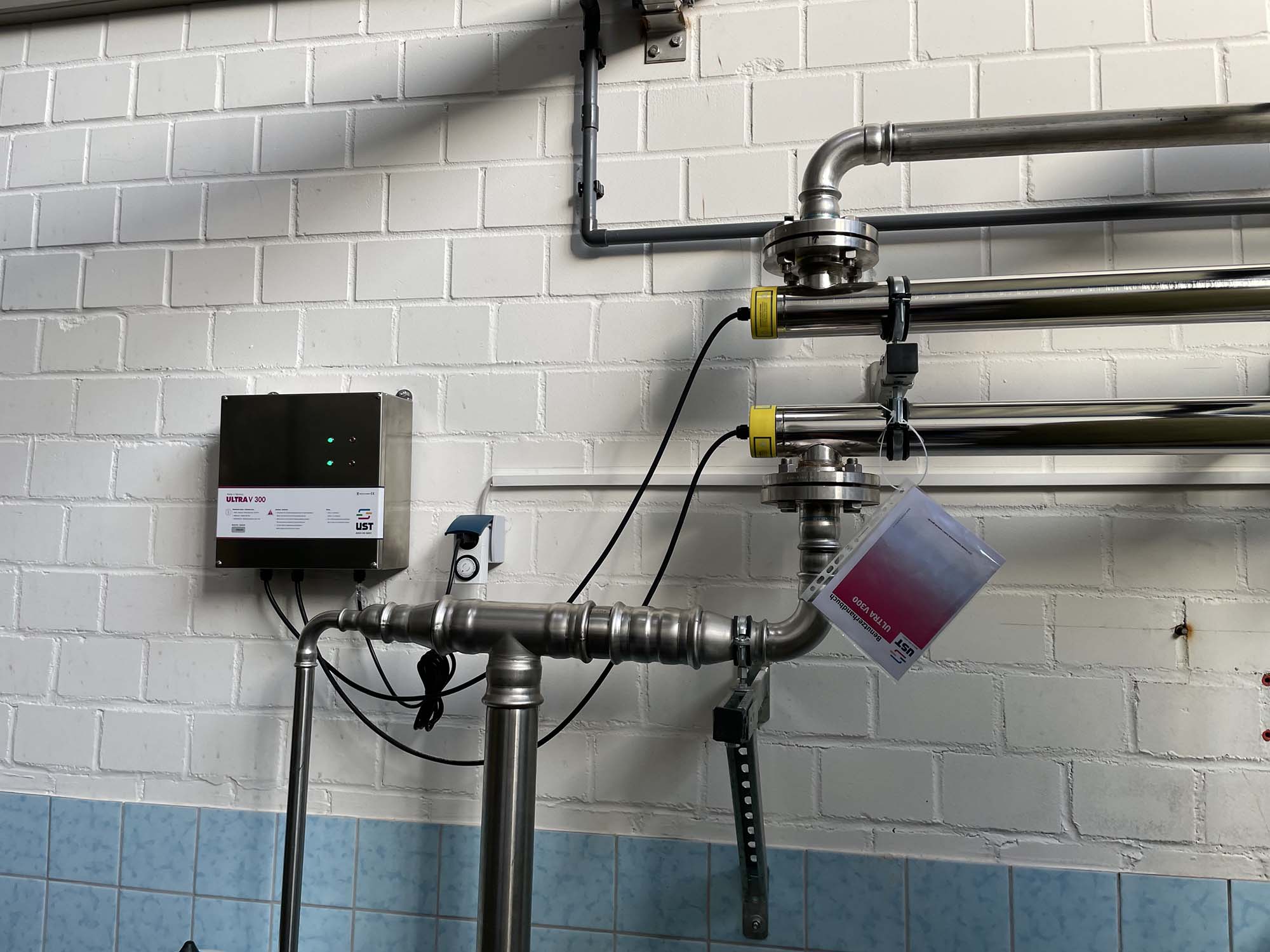UST Umwelt-Systemtechnik was found 1991, since 2004 the company is developing and producing water disinfection system generating electromagnetic waves in the ultraviolet spectrum (UV).
Easy Engineering: What are the main areas of activity of the company?
UST: Water used almost always has the minimum requirement to be free of pathogenic germs. Therefore UV-water disinfection systems have a broad range of applications. UST has specialized on two areas. The PURE WATER systems are standardized and provide smaller capacities for end consumers to disinfect private drinking water wells, swimming pools and ponds. The ULTRA V systems usually are offering solutions for larger capacities for industrial water circuits. Typically the ULTRA V- systems are used to disinfect water of cooling towers or air washers.
E.E: What’s the news about new products?
UST: There is not really much new at our products. The knowledge of the disinfection capacities of ultraviolet radiation is more than 100 years old. Professional UV-systems for the water treatment may be around for 40 years. Still, today the technology itself has to be presented as if it were a new approach. Chemical substances, chlorine for pools and drinking water, and biocides, more powerful mixtures for industrial applications, have been the traditional solutions for water disinfection and for many (potential) clients those are often enough the only solution. Sad, to some extent, on the other hand an opportunity.

E.E: What are the ranges of products?
UST: The PURE WATER systems for end consumers offer capacities to disinfect water between 300l/h, used for small water wells, up to 15m³/h, usually installed for swimming pools.
The ULTRA V systems for industrial applications are mostly custom-made with the currently largest units are equipped with multiple beams for up to 100m³/h.
E.E: At what stage is the market where you are currently active?
UST: The end consumer market has been volatile for the last 2 years. Our PURE WATER systems did enjoy a boom during the corona pandemic, when many people restrained from holiday trips in far away countries and invested in garden and pool instead. The insecurity due to the war in Ukraine and the inflation however caused a cooling of the demand, the growth as reduced to single digits in 2022.
For our ULTRA V systems, the pandemic can be almost considered the ignition. Until the first corona lock down the industrial production was at maximum gear with no capacities to spare looking for improvements at the periphery water circuits. It seems as only the lock down gave companies the time to evaluate alternatives that offer substantial cost reduction. Since we started the product line for ULTRA V in 2018 there where a handful of projects. Since May 2020, its one project after the other. That trend was unbroken in 2022, the project funnel lets me expect it will continue in 2023.

E.E: What can you tell us about market trends?
UST: The market trend for end consumer products I believe is difficult to foresee. It could be that the general insecurity, the inflation and a cooling down of the economy might lead to more caution at investments. On the other hands, the darkest pictures that were drawn during 2022 did not materialize: shortages in gas supply did not cause the shutdown of industries and consequential lay-offs, the economy is still growing and the inflation seems has passed its peak. Therefore, I tend to believe that consumers have found an arrangement with the circumstances and increase spending in 2023. Consequently, I expect a robust growth for our PURE WATER systems.
For industrial applications we did not see that caution in 2022. However, an number of clients dedicated capacities to adapt for alternative energy due to the insecure situation of the gas supplies. For our ULTRA V systems I therefore expect that 2023 will exceed the results of 2022 substantially. The pressure for industries remains high to cut cost as well as to pursue solutions that reduce the environmental footprint.
E.E: What are the most innovative products marketed?
UST: In 2022 we have made a number of improvements to our systems operating submersed UV-lamps. Regularly the UV-lamp(s) are installed centrally in a stainless-steel chamber which is integrated in the water piping. When the water flows through the disinfection is provided. When there is a buffer tank integrated in the system an enhanced disinfection effect can be achieved be installing the UV-lamp directly in that tank. It is that where most of the biological growth will take place as the tank offers an ideal environment for microorganism: Lower flow velocity, at times stagnant water, warmth, and input of nutrition through air. Bacteria and algae will form a biofilm at the perimeter of the tank and increase contamination of the water flowing through subsequently. A submersed lamp in the tank can effectively prevent the biofilm from forming and therefore offers an improved disinfection. The challenges of this approach are to safely install the UV-lamps inside the tank and provide the right UV-capacity to fully impregnate the tank. For the latter we have built up some experience, a mathematical approach is near to impossible as water quality and quantity varies. For the former, we have developed a mounting kit, custom-made and 3D-printed, that allows a fast installation that withstands a flow of up to 30m³/h.

In 2023 we will offer a solution for fully submersed lamps with an integrated partial shield. It will fit for the disinfection of the water basins of for standard cooling towers.
A technology we have been using for some years is the additional generation of ozone. Specific UV-lamps have in addition to the direct disinfection a focus on a second wave length that allows to crack oxygen molecules of the ambient air into single atoms. The oxygen atoms can form ozone and provide a powerful second level disinfection with a limited depot effect. In 2022 we have advanced that approach to grander scale, upgrading our ULTRA V1.2k, our currently largest system, injecting 30g/h ozone in the water flow after the premier disinfection with UV.
Started we have the development of a UV-LED system for the point-of-use disinfection of smallest quantities (up to 60 l/h). LED have advantages for non-continual operations and for applications with limited space and see laboratories as potential clients. A first model is aimed to be marketed by mid-2023.
Already at the beginning of 2023 we will market a electronical upgrade for most of our systems. The low-pressure lamps that are used to generate UV radiation are not suitable for frequent interruption, and are therefore often operated in a continuous mode. However, the lamps a fit to dim the intensity to as little as 60%, reducing the energy consumption consequently. In 2023 we will promote the dimming function in relation to various parameters, like temperature, UV-transmission and water flow.

